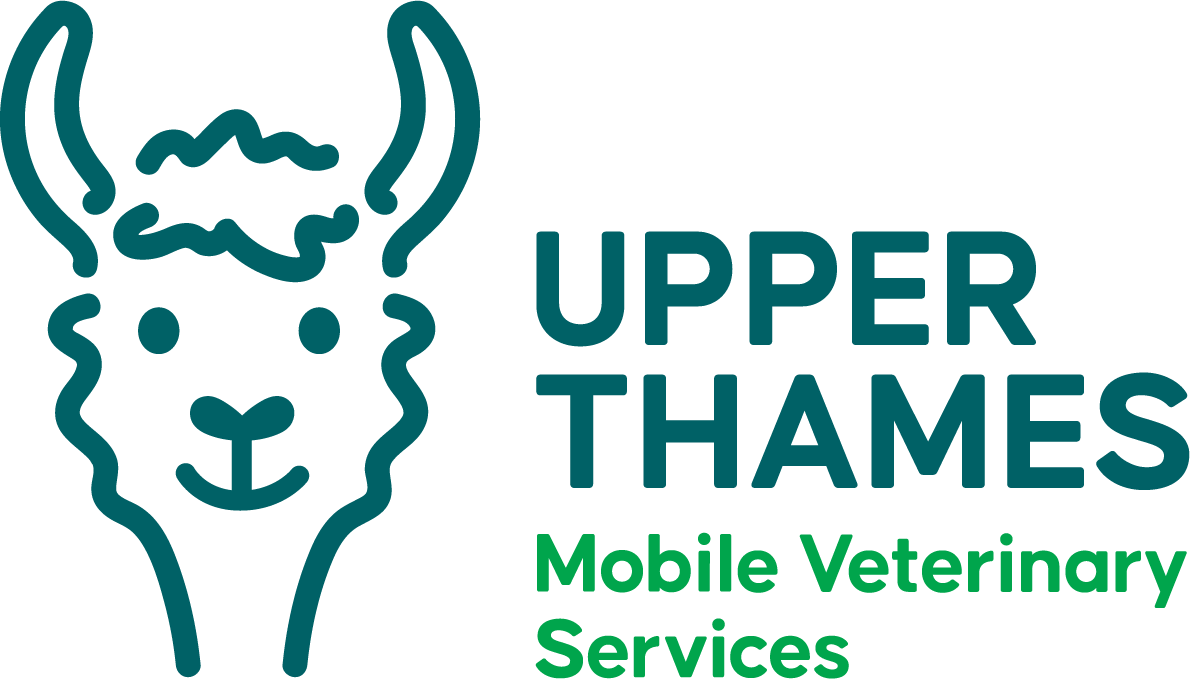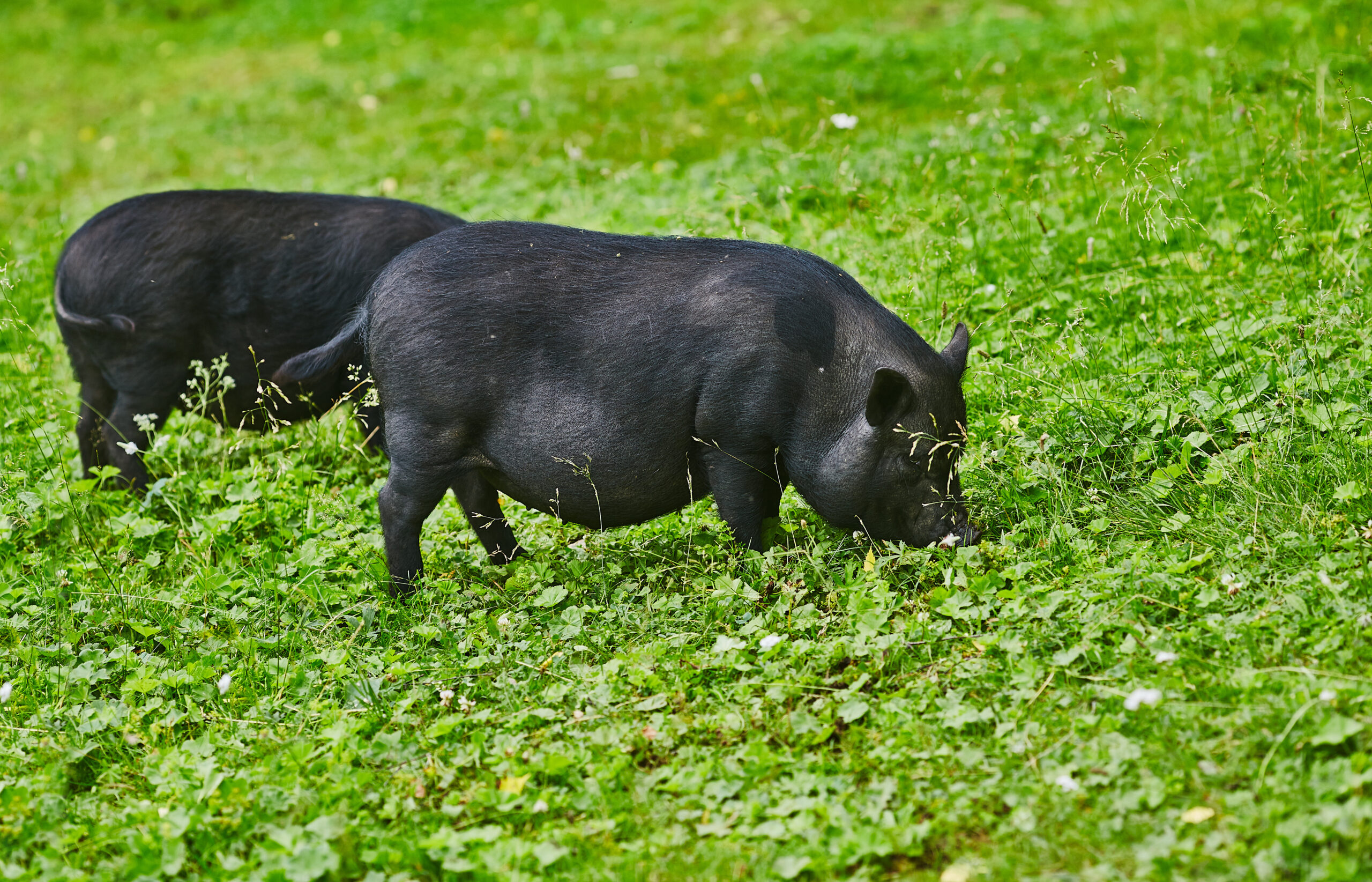Written by: Bria Osborne, OVC 2026
Editied by: Dr. Paisley Canning
Pigs are very exploratory creatures and require enrichment to keep them occupied and happy. In general, items that work best for pig enrichment and that pique their interest are ingestible, odorous, chewable, deformable, and/or destructible. Enrichment generally involves food or exploration although positive and pleasurable human interaction is also a form of enrichment.
The following are some fun ideas to keep your pig busy and out of trouble.
Throw/spread pellets over a clean area
This allows pigs to take part in natural foraging behaviours (figure 1).
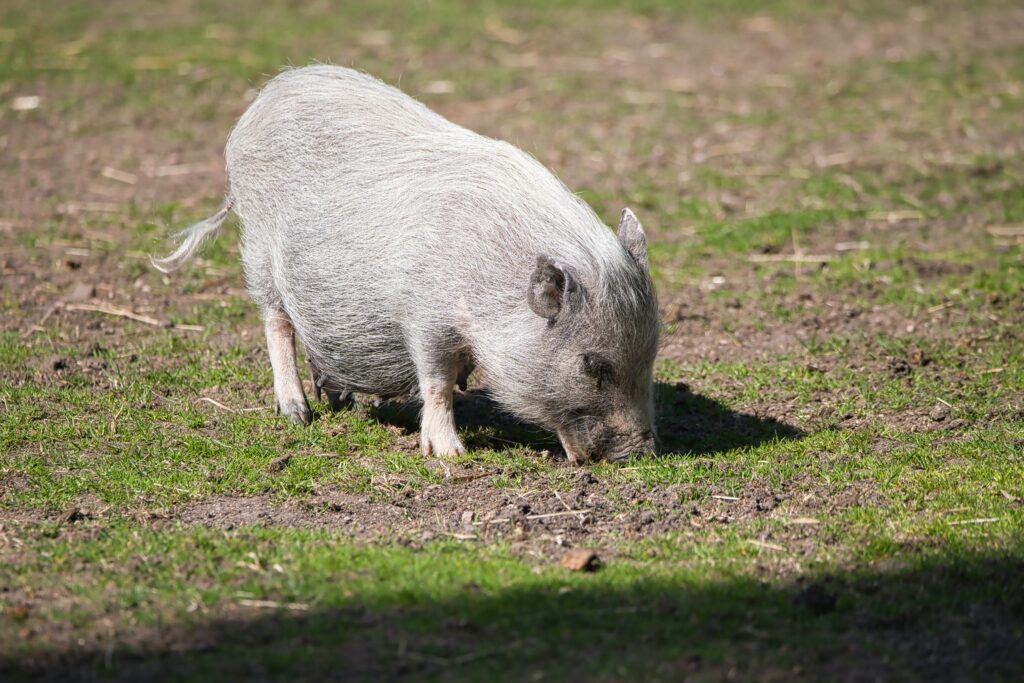
Figure 1: Consider spreading your pig’s pellets around their yard or area to promote foraging behaviour.
Spread pellets in a rooting box or mat
By making use of a rooting box or mat you are allowing your pig to demonstrate natural rooting behaviors. You can fill a kiddie pool with large plastic balls, large river rocks, crumpled paper, and/or hay. Be sure not to use sand as it can get ingested and cause issues in your pig. Also be mindful not to use any items that pose a choking hazard to your pig. Snuffle mats are another good choice for rooting enrichment (figure 2).
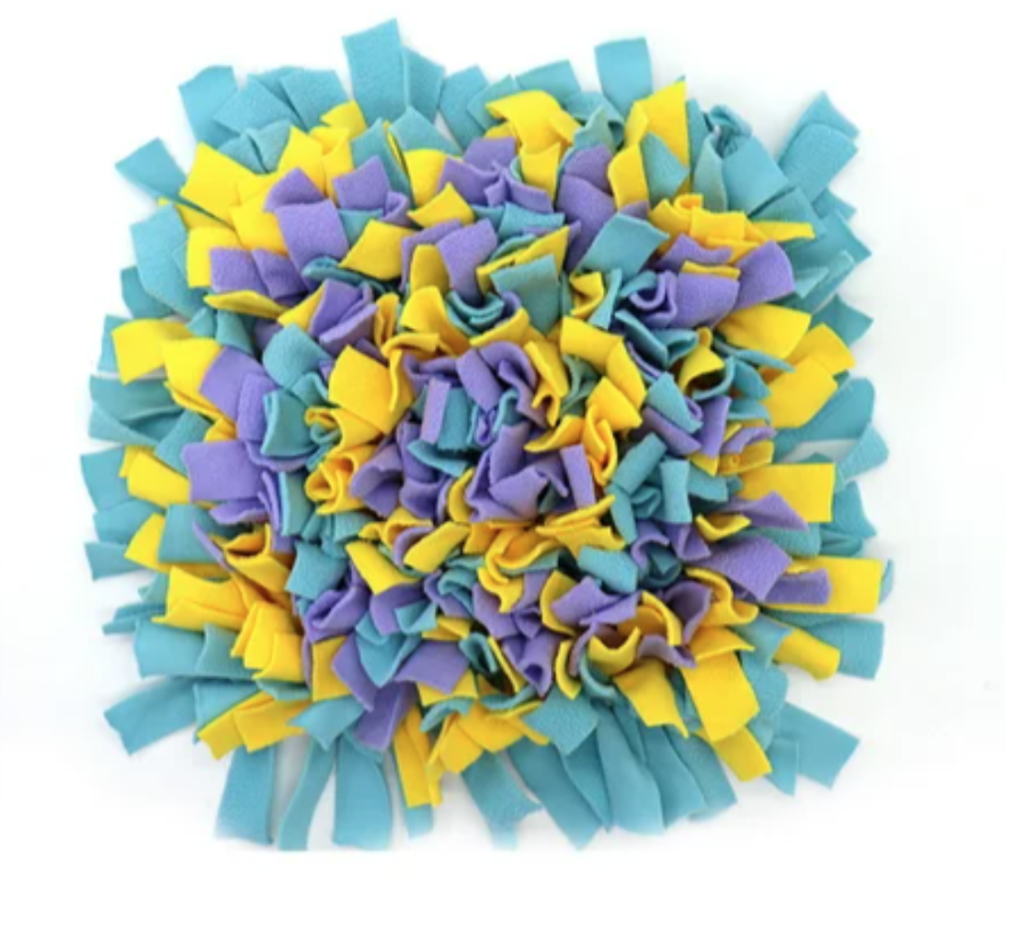
Photo credit: https://www.walmart.ca/en/ip/jovati-Wooly-Washable-Snuffle-Mat-Feeding-Mat-for-Dogs
Figure 2: Above is a snuffle mat that can be used to hide food for your pig.
Give their snacks in a food dispensing toy that requires manipulation
These toys allow for your pig’s mouth and mind to stay busy. You can use a puzzle toy (figure 3) or treats inside a closed cereal box.
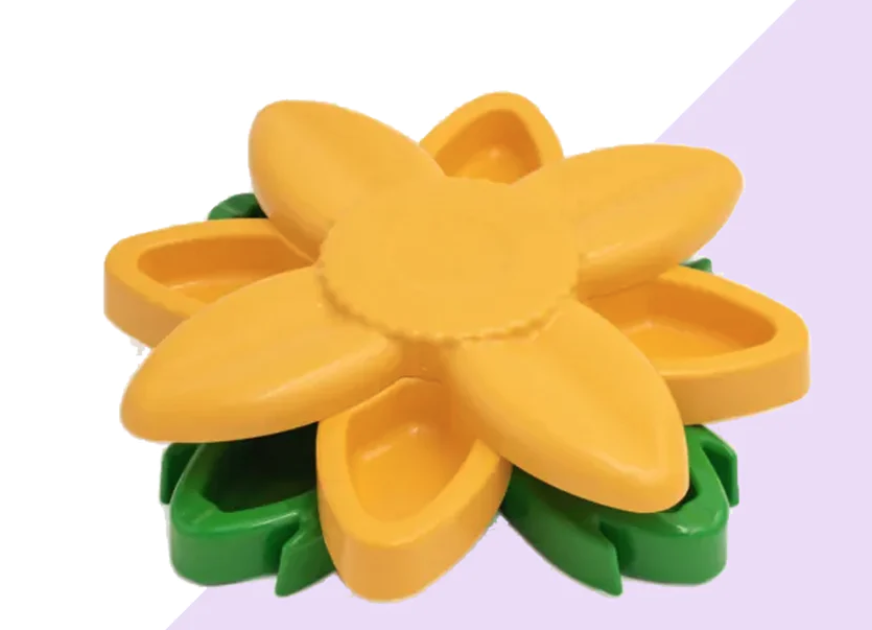
Photo Credit: https://oinkboxstore.com/collections/rooting-toys/products/sunflower-iq-puzzle-pig-toy
Figure 3: Above is a treat puzzle toy you can use to give snacks to your pig.
Regularly provide nesting materials
Nesting is a normal behavior that pigs like to take part in. By providing them with materials yourself, it can decrease the likelihood of your pig nesting with your personal belongings. You can provide plain brown paper (figure 4) or straw as nest building materials.
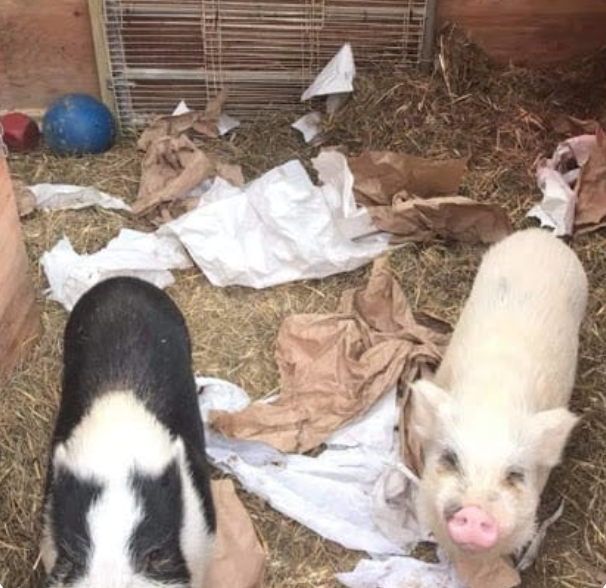
Photo Credit: Open sanctuary
Figure 4: Above are some pigs enjoying ripping up some paper for nest building activities.
Allow access to a novel area that has not been explored recently
Pigs are very explorative and enjoy investigating new places. You can take your pig to a new area of the yard, a new room, or take them on a walk to a new location (figure 5).
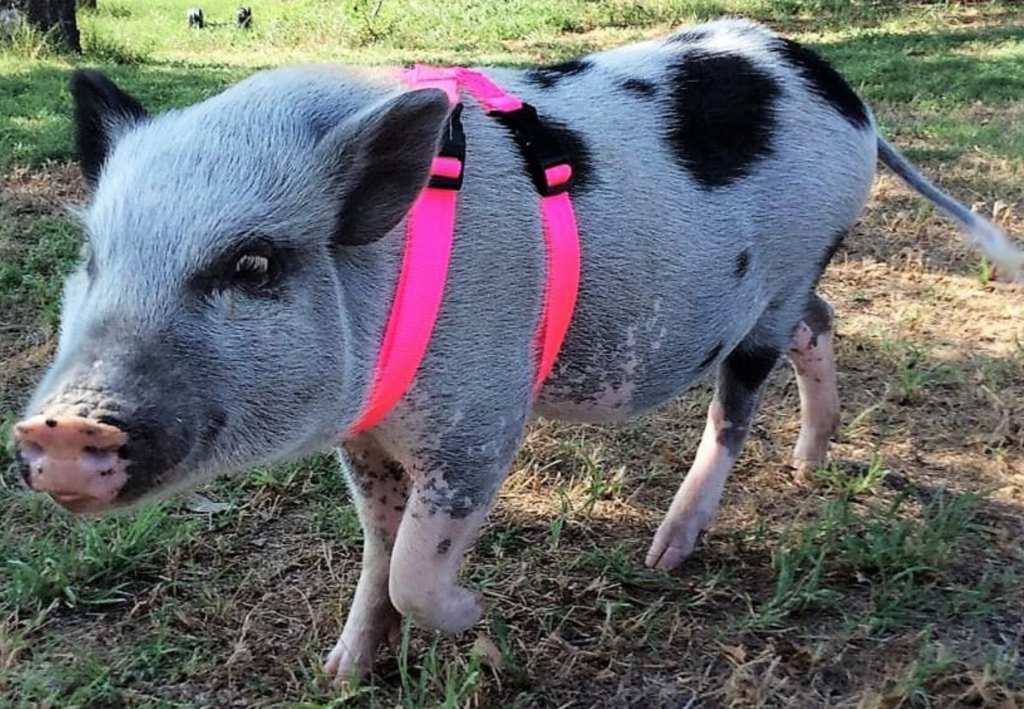
Photo Credit: Pet pig world
Figure 5: Above is a pet pig enjoying a walk in a harness.
Hang knotted ropes or hay dispensing objects
Pigs enjoy exploring objects with their mouths; therefore, these toys can keep them busy and allow for foraging behavior. You can hang up a knotted rope by itself or place some kind of forage (pig safe plants or hay) in it (figure 6). Ensure that any ropes do not pose a risk of tangling up your pig’s leg.
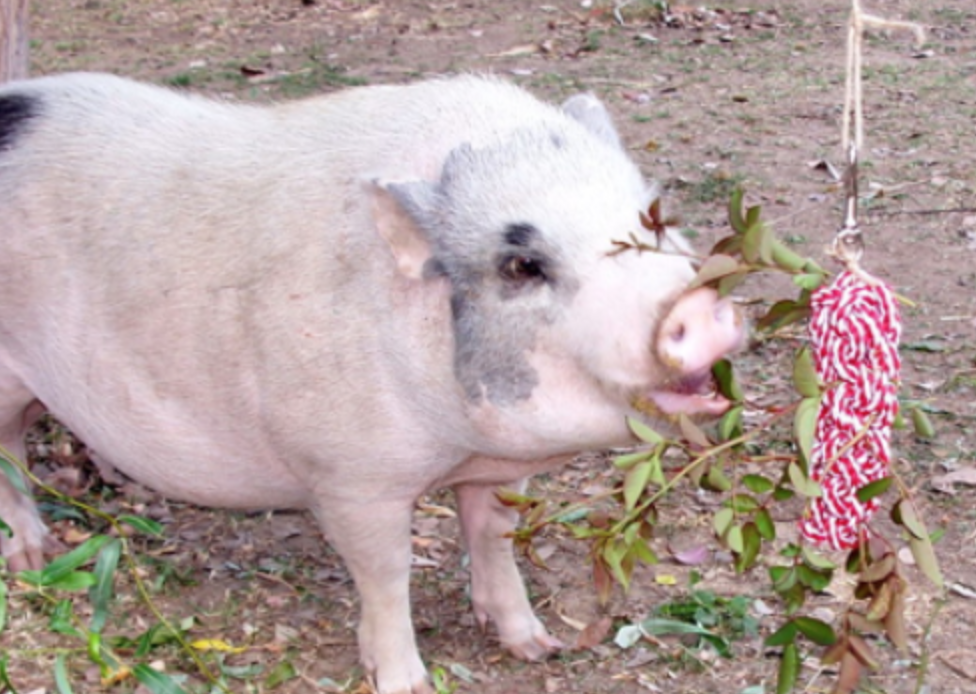
Photo Credit: California Potbellied Pig Association
Figure 6: Above is a pig playing with a knotted rope toy.
Mount a brush for rubbing and scratching
Most pigs enjoy a good scratch! By providing them with brushes and other materials (figure 7) to rub on, it can help deter them from scratching on other surfaces. It can also help the pigs stay comfortable and content.
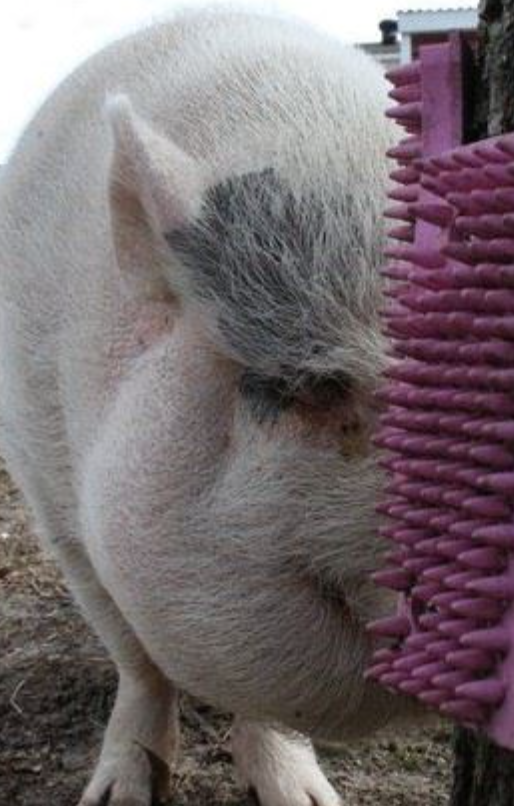
Photo Credit: Otto Environmental solutions for animal care
Figure 7: Above is a commercial pig scratcher.
If you have questions regarding enrichment or whether your enrichment activities are safe for pigs, please reach out to Dr. Canning. You can contact the clinic at [email protected], or on facebook.com/upperthamesvs.
References:
Potbellied Pig Veterinary Medicine by Kristie Mozzachio
